All about forest bugs
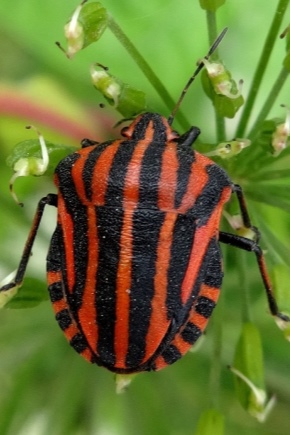
Currently, there are about 40,000 species of bedbugs on our planet. These hemiptera are cruciferous, freshwater, arboreal, and parasitic. One of the representatives of these insects is the forest bug, which does not harm humans.
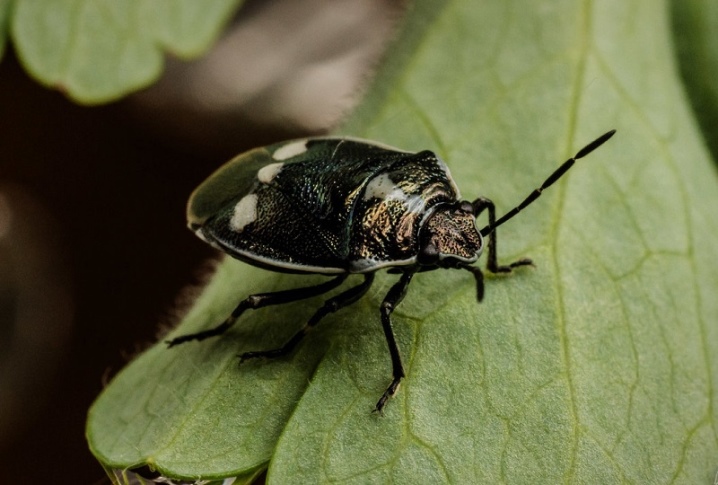
Description
Forest bugs, like other members of the hemiptera, have an unpleasant odor and a repulsive appearance. These insects live in trees where they eat and reproduce. Forests and plantations are common places where you can meet a small creature. In addition, sometimes forest bugs live in household plots, and also penetrate into residential premises. At the onset of the cold season, they hibernate, often hibernating under fallen leaves or the bark of an old tree.
Waking up after winter, the Hemiptera focuses on searching for food. When they are full, they can start mating. During this period, insects gather in colonies, thanks to which each representative will be able to find a pair for himself. Females lay eggs in the same place where they feed.
Usually, the arrangement of the clutches is concentrated on the lower part of the leaves.
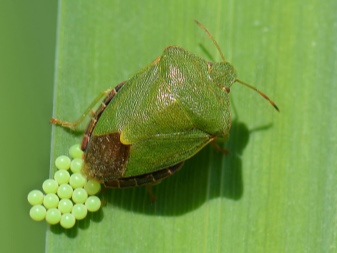
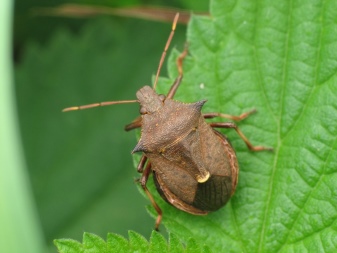
In the egg, the individual develops within 10 days. As time passes, a larva emerges from it, the body structure of which is similar to an adult representative. During the month, the bug repeatedly sheds and becomes a full-fledged imago. This insect has an elongated, pointed trunk, thanks to which you can easily pierce the bark of a tree or the skin of a plant. Representatives of these living world feed on sap of plant and woody individuals. The body of the forest bug is protected by a chitinous shell that completely envelops it. Thin webbed wings can be seen under the carapace.
On the head of the insect there is a long mustache, and on the chest there are a number of odorous glands. All forest bugs produce a strong unpleasant odor. In adult representatives, the body length does not exceed 1.5 cm. Unlike the bed bug, which feeds on the blood of people and animals, the forest representative is considered safe.
The only way he can harm a person is to spoil the berries and leave their pungent smell on them.
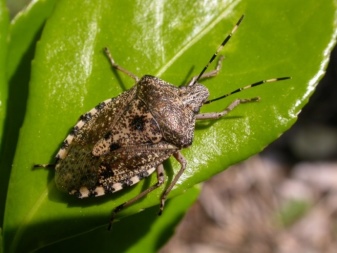
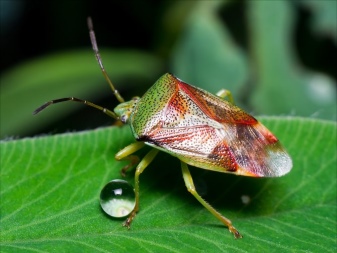
As is known, the unpleasant odor of bedbugs can benefit people. Vodka tincture on these insects is used to treat alcohol addiction. In addition, the smell of the Hemiptera can scare away other insects dangerous to humans. Many people confuse a bug with a tick and are afraid that it bites. But these fears are unfounded, since the bug's weak trunk is not able to pierce human skin.

Species overview
Like any other insect, the forest bug comes in several varieties. Each of the species of this hemiptera has its own characteristics of behavior, body structure and behavior.
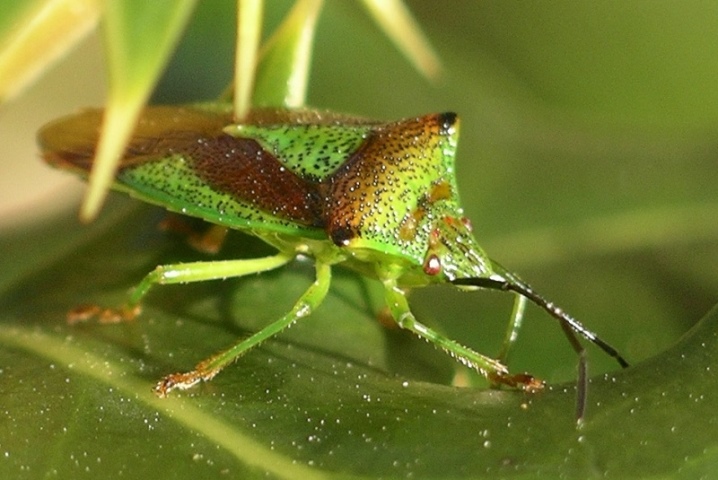
Predators
Predators are considered one of the largest bugs, they are also called "killer beetles". This insect has an oblong or pear-shaped body. The largest representative can grow up to 2 cm in length. The color of the shell of a Hemiptera can have different coloration depending on environmental conditions. Predators are distinguished by a small trunk, as well as small bulging eyes.
The female and male of the forest bug of this species are very similar in appearance. Females may lack wings. This insect clings to prey with long legs.Such a creature lives in a dark and dry place, usually trees, stones, grass. Such a Hemiptera feeds not only on plant food, but also on larvae, ants, and wasps.
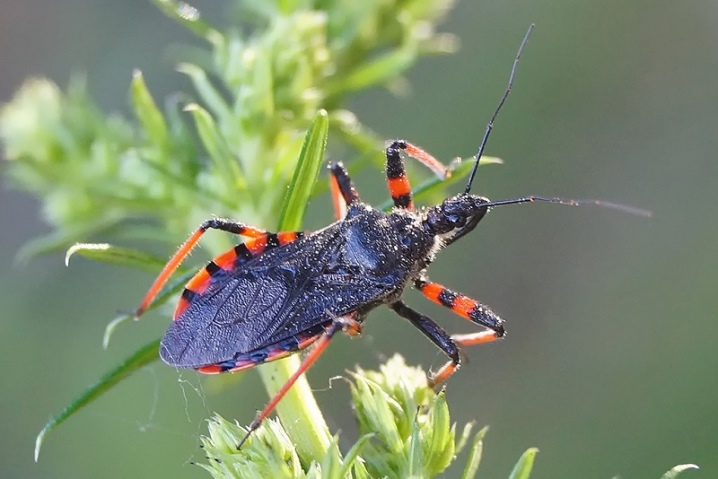
Blindflies
The horsefly bug is a pest of agricultural products. This Hemiptera has soft integuments in comparison with other species of the family. Its body coat is dark brown in color, and it also has small white spots on its wings. The head of the insect is very similar to that of an ant.
Horseflies can camouflage well, so they are often confused with other members of the family. These bugs are quite selective in their food, they are considered fans of ornamental vegetation. Usually this pest attacks a garden rose, sage, chrysanthemum, chamomile.
Hemiptera activity causes irreparable harm to gardeners.

Lacemakers
The lacemaker is a herbivorous bug. It lives on the foliage of trees, bushes, grass and moss. Often this insect creates colonies with which it attacks poplars, pears, oaks, plane trees. They attack fruit trees and are especially active during dry seasons. The lacemaker is classified as a quarantine pest, so many scientists are currently looking for effective drugs to combat it.
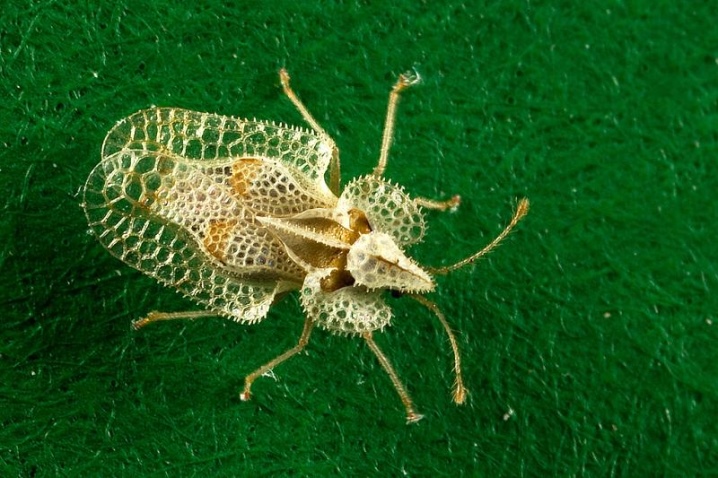
Shields
The bug bug is considered a common insect, it is characterized by the presence of a chitinous shell with a thyroid form. The insect can be light green to brown in color. Due to its small wingspan and lack of strength, flight is rather difficult for this hemiptera. Some individuals feed on young grass shoots, harming the economy. The parts of the culture affected by the pest begin to wither and wither, so the attack of the shield bug is considered a real damage for the farmers.

Cucumber
The cucumber bug is a tiny parasite that settles on the back of the leaves of eggplant, cucumber, pepper, and tomato. The insect has an active life in the presence of greenhouse conditions. The harm of this Hemiptera is that it sucks the sap from the foliage of plants, which subsequently curls and dries up. If a large number of pests settle on the site, then they can destroy the entire crop in a short time.
The bug of this species belongs to the aggressive variety of the cucumber parasite. The sucking creature is black in color, so it is not so easy for a person to notice it.
For people, the cucumber bug is safe and harmless, the only exception can be individual intolerance.

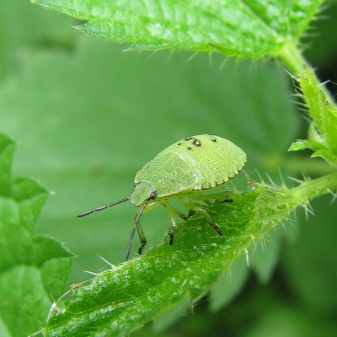
Berry
The berry bug insect has a small flat body. In length, the bug usually reaches from 10 to 20 mm. The matured individual is able to constantly change its color, adjusting to the color of the foliage. In summer, the insect is burgundy, and in autumn it turns brown. There are long villi throughout the body of the berry bush bug.
This type of bugs, like other relatives, gives off an unpleasant odor that comes from the hole in the belly. The berry shit bug settles in the garden, vegetable garden, meadow, woodlands, conifers, bushes and grasses. Quite often, this insect can be found on the fruits of raspberries and currants. This pest feeds on berries, garden, oilseeds, grain crops, as well as herbs and tender juicy foliage.
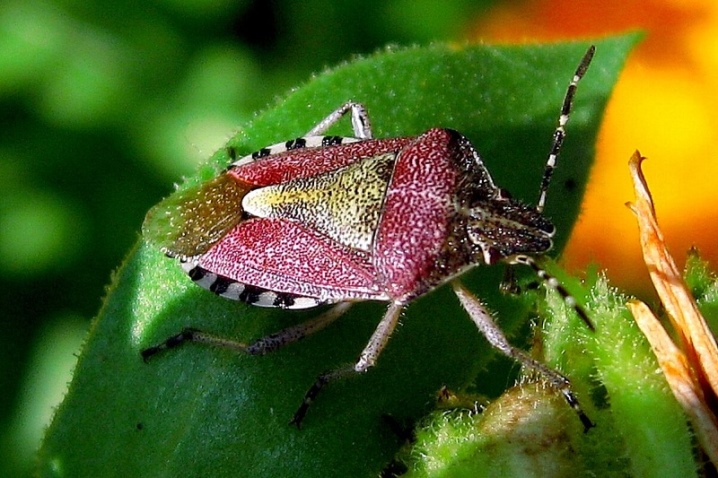
Green
You can meet a green tree bug in an area with rich vegetation. He practically does not live in human housing. This Hemiptera is characterized by the presence of a characteristic unpleasant odor, which is released when an insect is touched.
The stink bug is colored bright green, in the abdominal region with a yellow tint. Closer to autumn, brown spots appear on the pest's body, which are necessary for its adaptation to the environment. Due to its short wings, it flies only a short distance.In winter, this bush bug is not active; with the onset of warmth, it settles in areas with lush vegetation for a long time.
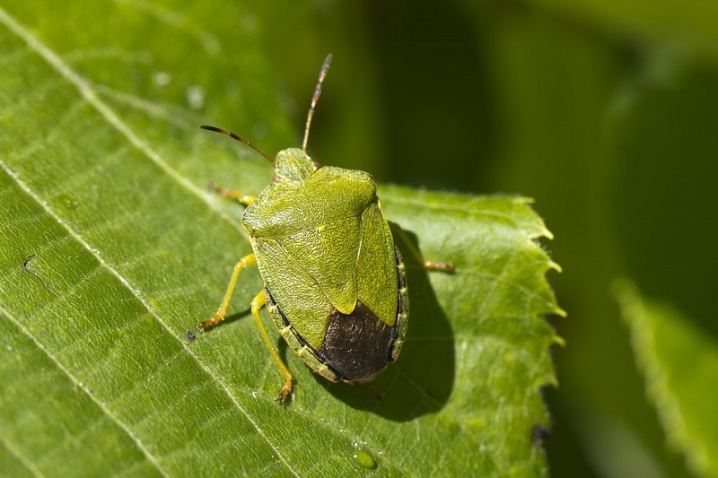
How to fight?
If you want to get rid of bed bugs on the site, experts recommend not using strong chemicals or killing insects. So that there is no whole colony of hemipterans in the apartment or on the balcony, it is better to take preventive measures. To eliminate the pest, it is recommended to collect them in the palm of your hand and throw them out into the street.
To protect your garden berries from the bug, you can treat them with a soapy solution. In addition, chlorophos, dichlorvos or phosphamide can be used on the site to get rid of pests. In the case of using the listed funds, experts strongly recommend the use of closed clothing, a respirator, and gloves.
Folk remedies are considered no less effective ways of dealing with forest bugs.
- Making a tincture from onion peel or mustard powder. With such a tool, it is worth spraying crops several times a day.
- Planting such a representative of the flora as a cimicifug on the site - this perennial has long won the title of an effective black cohosh.


Prevention measures
To eliminate the forest bug, you should not kill it. When frightened or fear of death, the insect exudes its fetid aroma. To prevent the emergence of these Hemiptera, it is recommended not to neglect the following preventive measures:
- put mosquito nets on windows and doors;
- in summer, do not leave doors and windows open;
- in the evening, do not air out with the light on, since bedbugs are attracted by bright lamps;
- fallen leaves on the site should always be collected and burned so that the insect does not use it for wintering;
- periodically inspect the leaves in the garden for the presence of Hemiptera or their eggs;
- it is undesirable to use insecticides to eliminate bedbugs; manual capture of the pest is considered the most effective option.
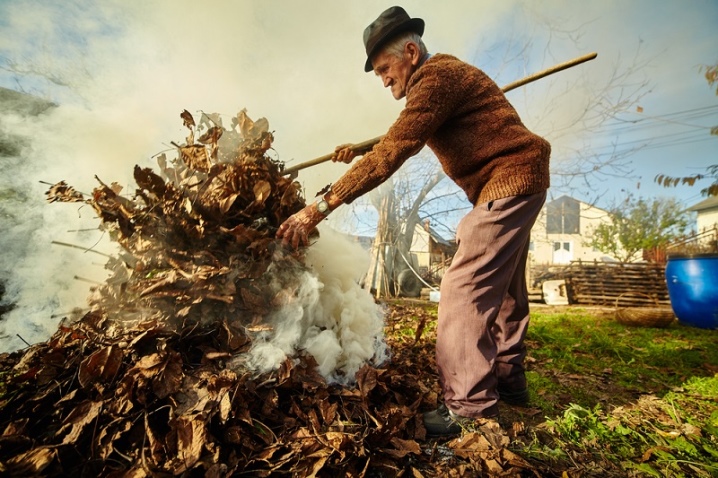
From all of the above, we can conclude that finding a forest bug near a person is absolutely harmless. However, for herbaceous plants, garden, cereal, garden crops, such a neighborhood ends sadly. If the hemiptera appeared in the apartment, then it is better to remove them mechanically and release them without killing them. When forest bugs attack cultivated plants, then it is better to use folk remedies, and if they do not help, then chemical preparations.
According to experts, it is worth observing preventive measures - and then the insect will never bother with its presence.














The comment was sent successfully.